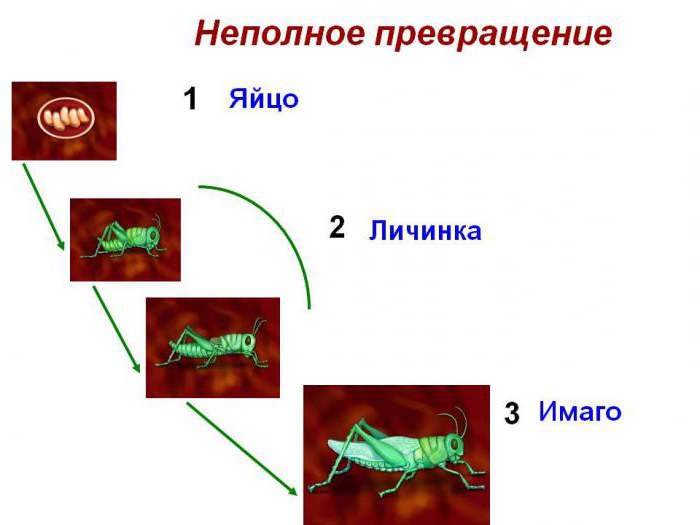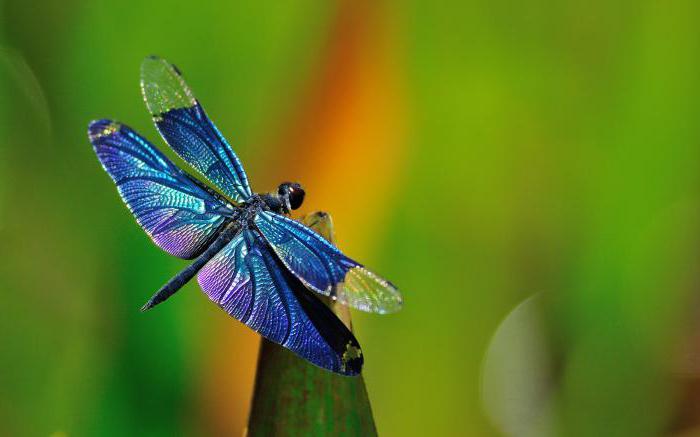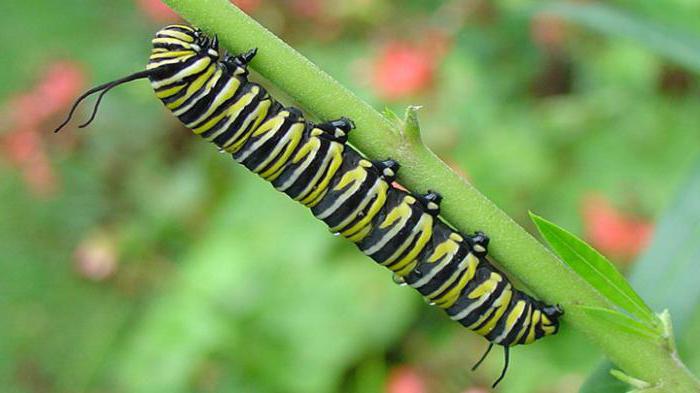Postembryonic development, otherwise called post-embryonic development, in all the organisms that inhabit our planet, can be divided into two forms: direct and indirect. The first species is inherent in reptiles, birds, mammals. Young or born babies are a small copy of an adult. Another form of development is found in fish, amphibians and arthropods. In this article, with specific examples, we will consider the stages of development of insects.
The biological role of metamorphosis
The development of various animal species with incomplete and complete transformation (metamorphosis) provides the most optimal conditions for the life of juvenile and adult forms and reduces competition for food supply between them. This allows the use of alternative food resources, and also contributes to the resettlement of a species occupying a different habitat (air, land, water or underground). Metamorphosis of insects is one of the reasons for the enormous number of species of these organisms that currently live on Earth (more than one million). They occupy almost all existing ecological niches. Insects represent an arthropod type class. The stages of development of insects are the following phases: egg (embryonic development), larva, pupa, imago (postembryonic development).

The egg stage is the first and mandatory phase of the insect's life cycle. It has several shells. The first is called chorion (performs a protective and mechanical function). In some species, it is complicated by layers of wax or chitin and penetrated by pores. The second membrane, vitelline or serous, is in direct contact with the developing embryo. Its nutrition is provided by the yolk. The shape, color of the chorion and the size of the eggs of various insects are diverse. So, in grasshoppers the egg length reaches 11 mm, and in spider mites - only 0.14 mm. Most insects lay their eggs, although there are live-bearing forms, for example, a Madagascar cockroach. A larva emerges from the egg, which is the next stage in the development of insects.
Complete transformation
It is characteristic of species of the subclass winged insects. Before becoming an adult - an imago, the body, leaving the egg, undergoes two completely different life stages: larvae and pupae. Insects, which are characterized by complete metamorphosis, are called holometabolic. These include orders of Lepidoptera, Diptera, Coleoptera, etc.
Features of the larval stage
They are, first of all, in the anatomical structure of the body. Most larvae lack a reproductive system. Also, the oral apparatus is different, which means the type of food. Consider the larval stages of the development of insects with incomplete transformation.
One of the most ancient organisms - dragonfly, lays eggs in the water of standing reservoirs. After 20 days, and in some species, after 2-9 months, a pronimfa (prelarva) appears, which lives only a few seconds, then it molts, and a mollusk is formed - a real dragonfly larva. It has small dimensions (1.5 mm), and the life cycle, depending on the type of insect, can last from several days to one to three years. The larva actively hunts in water and has tracheas for breathing, therefore it often rises to the surface.

Continuing to molt and grow, it crawls out of the water onto the stems of aquatic plants and transforms into an adult insect - a dragonfly, which has soft wings and integuments. For a while she does not move. The chitinous layer covering the insect hardens. Dragonfly becomes capable of flying. To summarize, let us say the following: the stage of the larva in dragonflies of various species provides an extension of the habitat of these insects. Note that the sexually mature insect, the dragonfly and its larva, have similarities in the way of feeding (both are predators) and also respiration (organs are trachea). The difference is in their habitat: adults live in the air, and mollusks live in the water.
Fully Transformed Insect Larvae
In representatives of the order Lepidoptera, for example, in butterflies, they are called caterpillars and are very different from adults. A larva emerges from the egg, gnawing its shells and immediately begins to eat leaves and other parts of the plant with its powerful jaws - mandibles. Her body is worm-shaped, has a head, three thoracic and ten abdominal segments. The integument is provided with hairs - bristles. Butterflies are insects that are characterized by complete transformation. On the lower lip of the larva there is a paired gland secreting secretion. Freezing in the air, it forms a thread, which the larva uses to form a cocoon. Remaining in it, the larva turns into a chrysalis. She can live from several weeks to one to three years, and the pupa of the Piper lives up to 10 years. In her body glycerin and betaine are formed - natural antifreezes.

The larvae of butterflies - insects having a complete transformation, often molt. Their last molt ends with pupation. In some species of insects, the larvae have separate names. For example, among sawfly beetles, this is a false caterpillar, among pollen eaters and black beetles, it is a false stalk, dragonfly larvae are called mollusks, and their prelarvae are called nymphs.
What is a chrysalis
This is the phase of the life cycle of insects, which leads to the development of a sexually mature individual - an adult. The pupal stage is characterized by the fact that the body does not feed and cannot move. In addition to silk, animals often use sand particles or shells to build a cocoon and strengthen it. For free pupae, the antennae, legs and wings of the future adult are free and pressed to the body. Covered pupae are characteristic of many species of butterflies, ladybugs, and some dipterans.
Imago
For the last stage of development of insects, the formation of the reproductive (reproductive system), as well as all the external signs inherent in this species, is characteristic. Like the larva, the imago has the function of resettling insects in various habitats. In addition, adults are responsible for reproduction and have genitals. In males they are called testes, and in females - called ovaries. There are also adnexal glands secreting secretions and copulative organs for mating.
In this article, we examined the stages of development of insects having indirect development with incomplete and complete transformation.